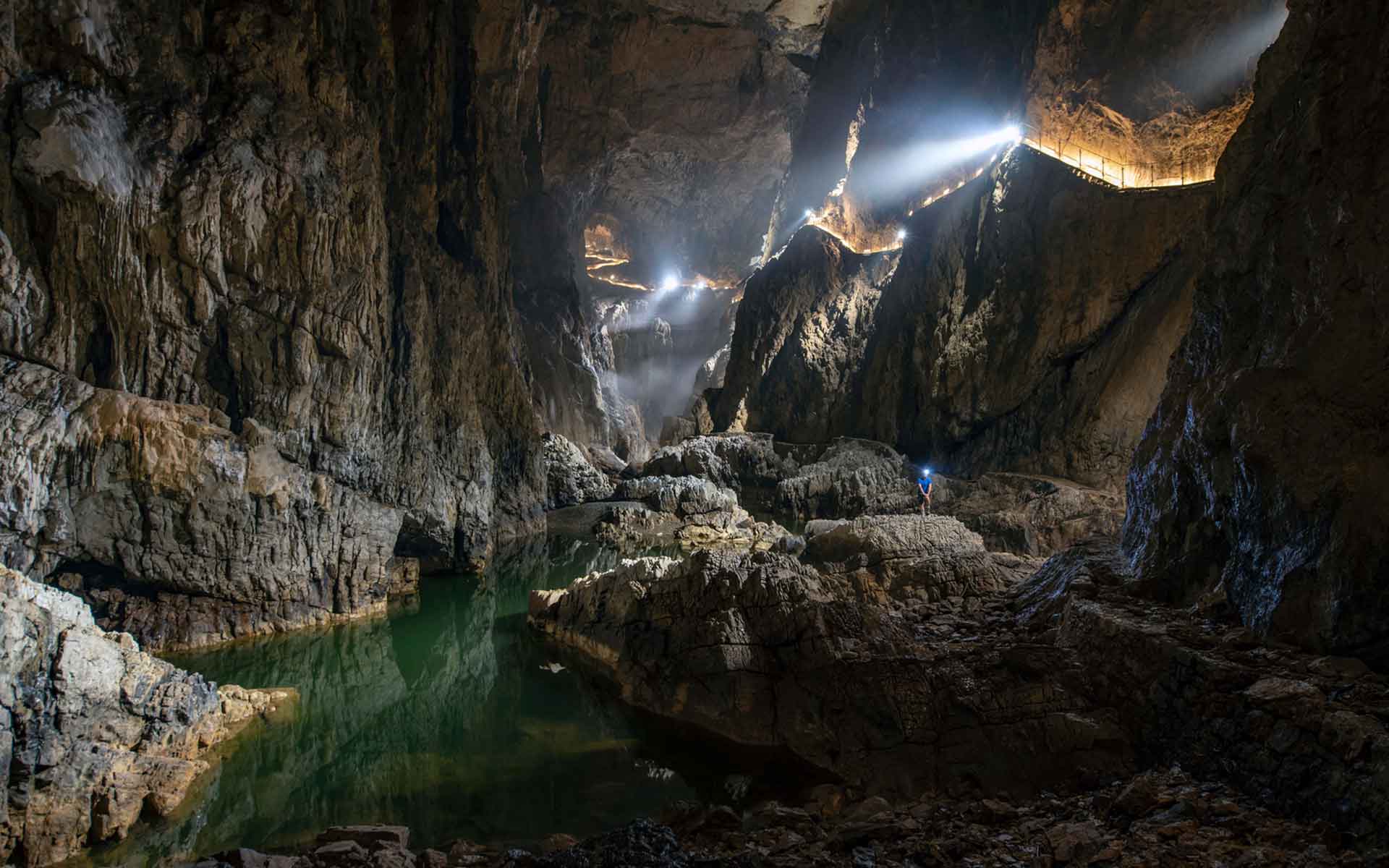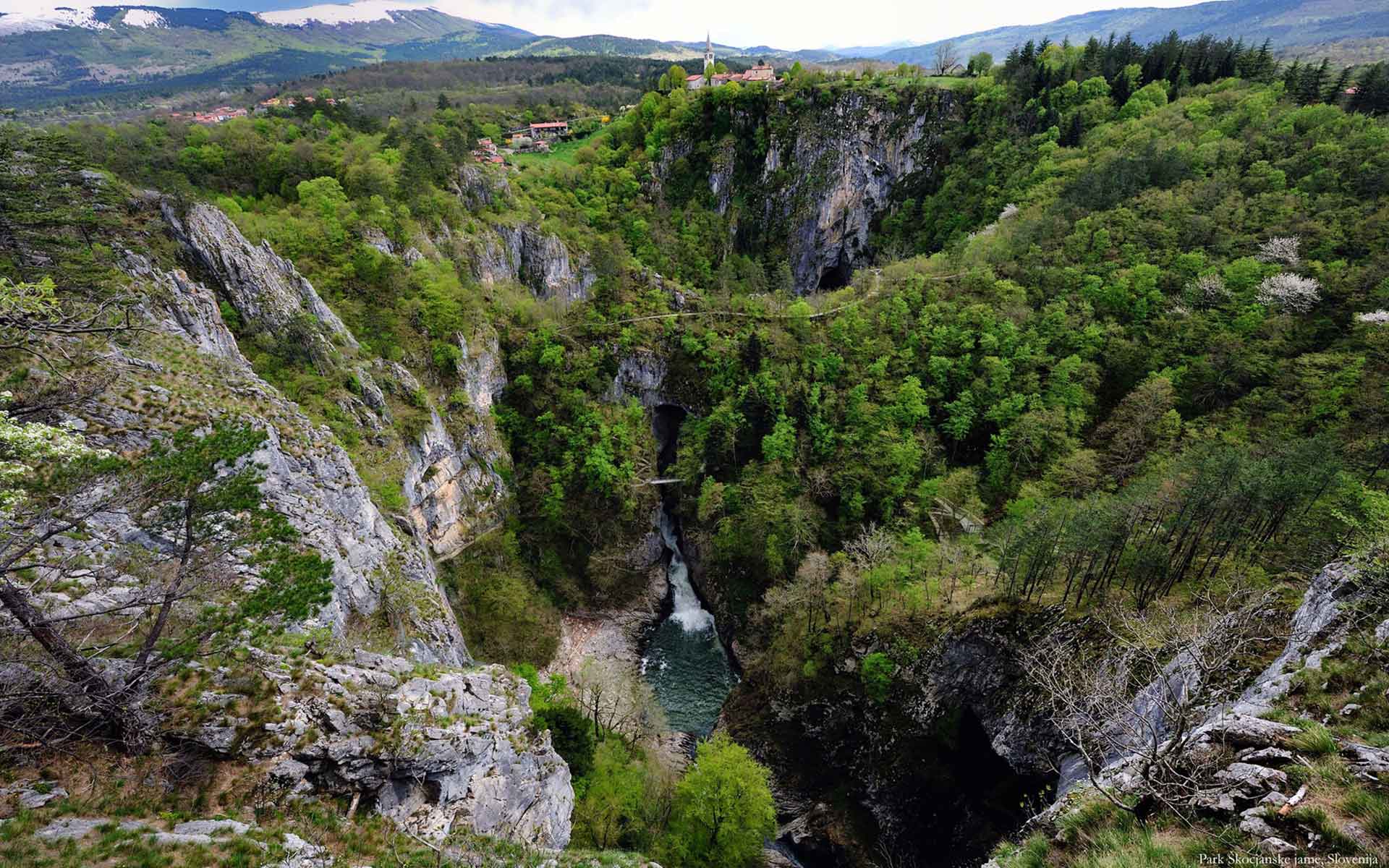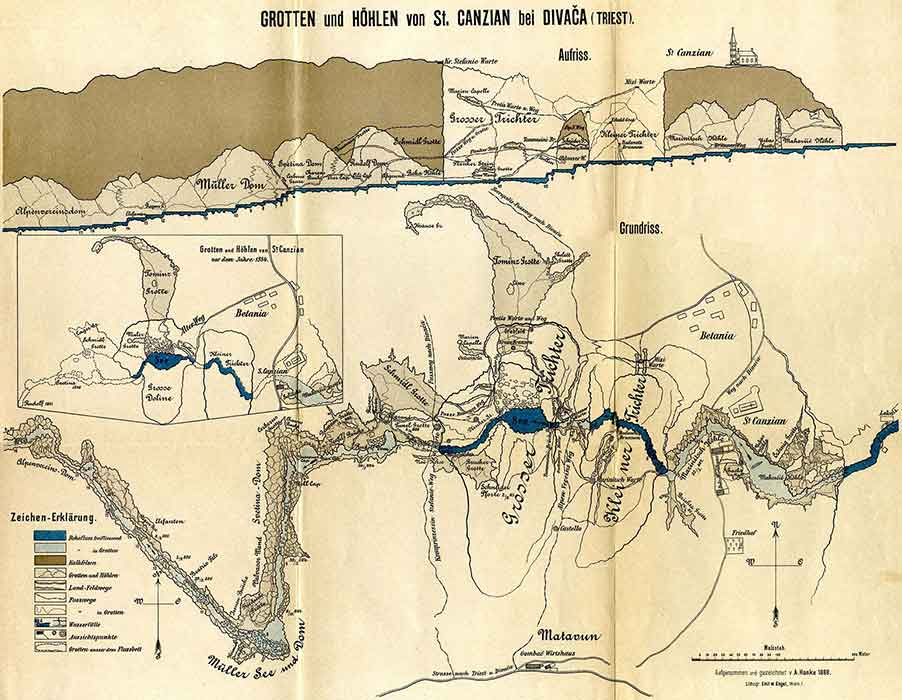
Underground canyon of Škocjan Caves which is about 100 m high and 3 km long.
Geological Period
Neogene – Holocene
Main geological interest
Geomorphology and active geological processes
Location
Kras (Karst). Škocjan Caves UNESCO World Heritage, Slovenia.
45°39’47.0″N, 13°59’21.0″E
Underground canyon of Škocjan Caves which is about 100 m high and 3 km long.
AN OUTSTANDING KARST SYSTEM IN THE CLASSICAL KARST WITH ONE OF THE LARGEST KNOWN UNDERGROUND CANYONS IN THE WORLD.
Škocjan caves, with their numerous remarkable speleological, hydrological and morphological karst features, are unique in their appearance and size. They are one of the most spectacular examples of contact karst formed by a torrential sinking river at the contact of impermeable flysch and permeable limestone. Textbook examples of sinkholes, natural bridges, gorges, potholes, collapse dolines, abysses, an underground canyon, springs, and passages covered with flowstone deposits give this small area worldwide significance in the study of karst features and processes. Due to their geological and aesthetic importance, Škocjan Caves have been on the UNESCO World Heritage List since 1986.
- Geological description
The Škocjan Caves are an approximately 6 km long cave system formed by sinking Reka river which flows from impermeable Eocene flysch rocks into the mostly well bedded Upper Cretaceous limestone of the Kras Plateau. The area is extremely rich in surface karst formations, caves, and especially collapse dolines and unroofed caves, the latter being described for the first time in this area. Rock stratification and tectonic deformation have significantly influenced the formation and spatial distribution of the passages. The main cave passage is impressive with a canyon about 100 m high, where the river flows, and one of the largest cave chambers in the world with a volume of 2.5 million m3. Due to the torrential nature of the Reka river, the water level in the cave rises up to 130 m during occasional floods. In the sediments, brought by the river into the caves from the surface to the ponors, about 5 million years of karst and cave evolution is written. When describing collapse dolines, karstologists based their writing on Velika and Mala dolina and the term collapse dolines is currently used in the international karstic terminology (Boegan, 1924; Oedl, 1924; Aljančič et al., 1998; Kranjc, 2002).
- Scientific research and tradition
In the 19th century, this geosite in the heart of Classical Karst, contributed to the emergence and development of karstology, speleology and speleobiology as scientific disciplines (Müller, 1890). Due to the distinctive relief forms, local terms for karst phenomena, such as kras (karst) itself, entered the international scientific terminology.
- Reference
Aljančič, M. et al. (eds) (1998) ‘Škocjanske jame – The Škocjanske jame caves. Naše jame’, Bulletin of the Speleological Association of Slovenia, 40.
Boegan, E. (1924) Le Grotte di San Canziano, Trieste.
Kranjc, A. (2002) ‘Zgodovinski pregled in opis jam (A Historical Overview and Description of the Caves)’, in the monograph Park Škocjanske jame (The Škocjan Caves Park). Škocjan Caves Park.
Müller, F. (1890) Die grottenwelt von St. Canzian. Vienna: verlag des Deutschen und oesterreichischen alpenvereins. Available at: http://archive.org/details/bub_gb_QyYEAAAAYAAJ.
Oedl, R. (1924) Der unterirdische Lauf der Reka. Doktordissertation, manuscript.
- Author(s)
Nadja Zupan Hajna
ZRC SAZU Karst Research Institute
Andrej Mihevc
ZRC SAZU Karst Research Institute
Borut Peric
Škocjan Caves Public Service Agency
Matevž Novak
Geological Survey of Slovenia


